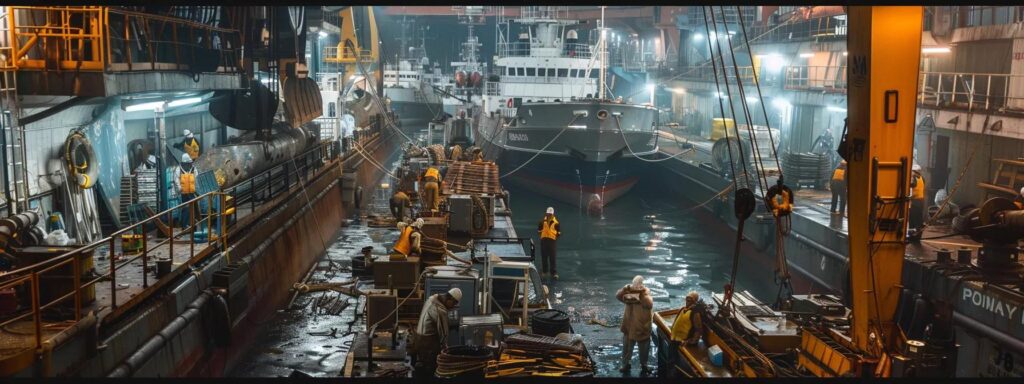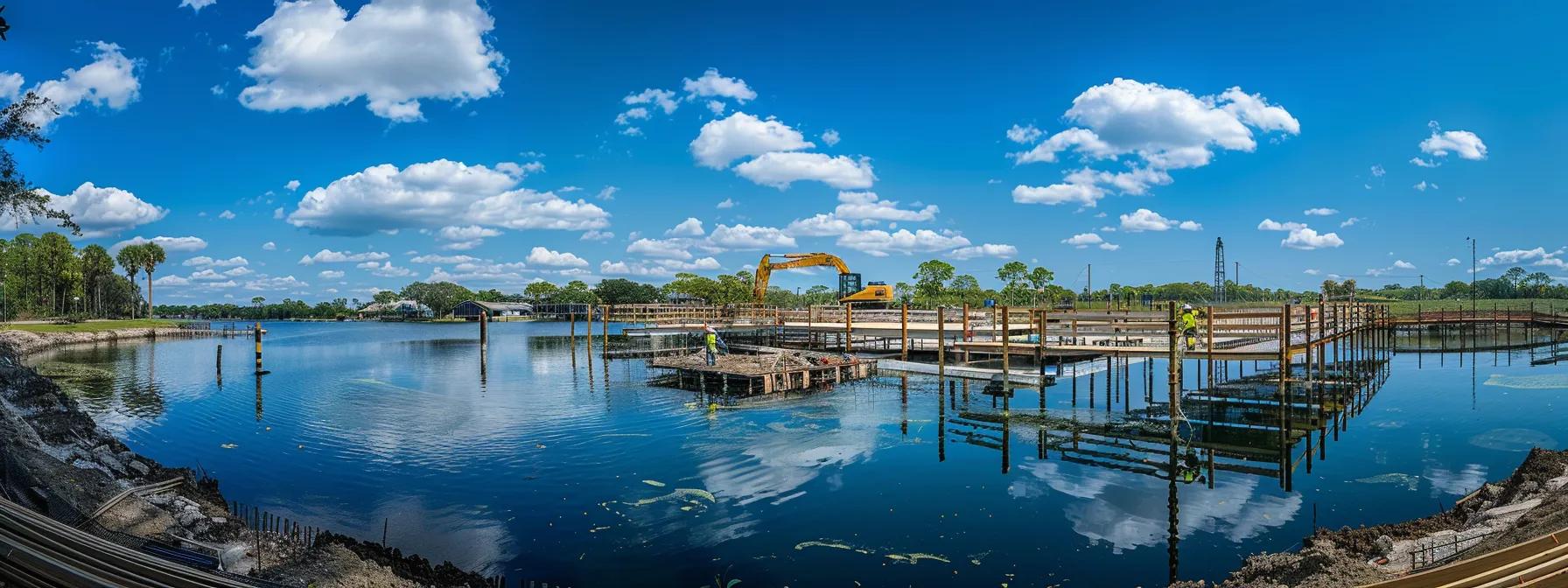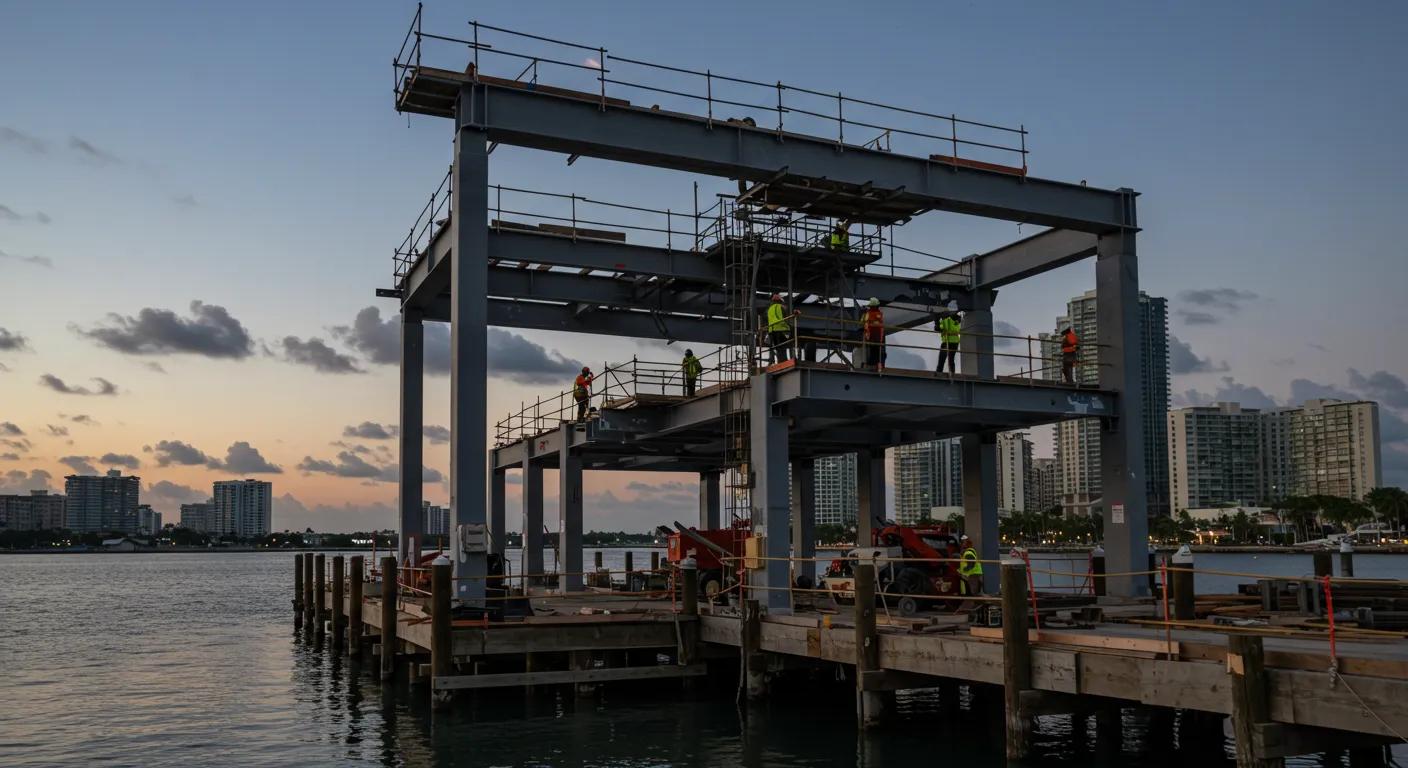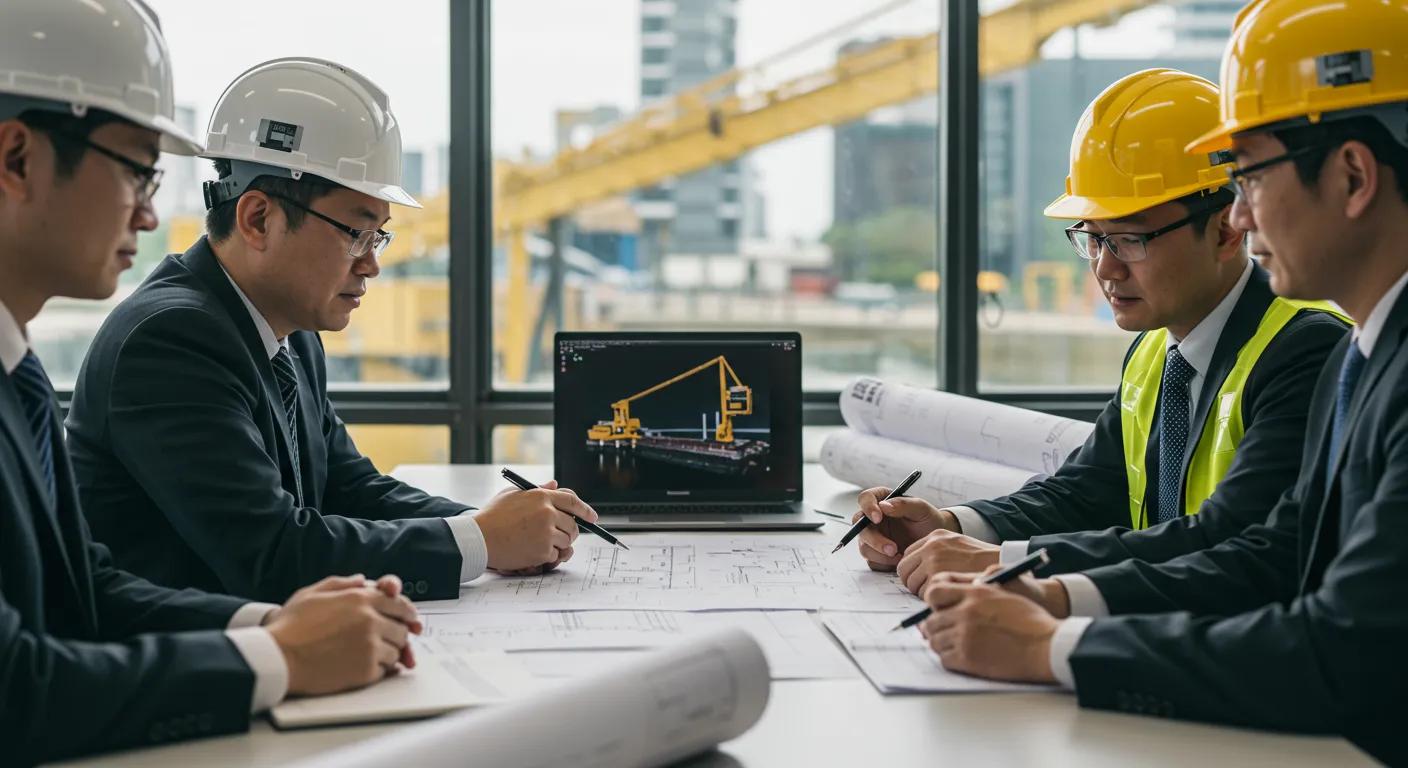Leading Dock Construction Services in Central Florida
In Central Florida, the demand for expertly crafted docks is growing due to an increase in waterfront properties and heightened environmental awareness. Homeowners need dependable, professional dockconstructionservices that blend durability, aesthetics, and adherence to strict regulatory standards. Whether you are planning a new dock build, a renovation, or require ongoing maintenance, understanding the full scope of available services is essential. This guide covers dockconstruction solutions, repair and maintenance, advances in construction technology, cost factors, local regulations, and customer feedback to help you make an informed decision. By the end, you will understand how partnering with experienced bulkheadbuilders and constructionservices can transform your waterfront experience.
Discover Comprehensive Dock Construction Solutions in Central Florida
Examine the Range of Services for Dock Construction
Dockconstruction in Central Florida offers a wide range of services. Companies typically handle every step from initial design and planning to installation and finishing touches. This process includes detailed site evaluations, material selection, and precise engineering to meet local building codes and environmental regulations. Typical services include custom dockdesign, renovation of existing docks, and installations tailored for waterfront parks or boat docks.
A full service package begins with an initial consultation that assesses site conditions such as water depth and soil stability. Designers use Computer-Aided Design (CAD) tools to create accurate blueprints, ensuring proper placement of custom features like integrated boat lifts, LED lighting, and specialized decking that withstand harsh marine conditions. Contractors in Central Florida understand local water conditions and weather patterns, using materials like treated wood, composite decking, and corrosion-resistant metal fittings. Emphasis on sustainability and on-time project management ensures minimal disruption and long-lasting performance.
Identify Key Features of Quality Dock Design
Quality dockdesign focuses on functionality, durability, and aesthetics. Key design features include a sturdy structural foundation, use of durable materials, and safety features such as non-slip surfaces and ample lighting. Modern docks also integrate smart technology like automated lighting controls and remote monitoring systems to ensure optimal upkeep.
The design process promotes ease of access for both pedestrians and boats through wide pathways, strategically placed handrails, and flexible entry points. Additionally, designs incorporate environmental considerations—features that prevent soil erosion and support local marine habitats. Thorough consultations and customized designs, supported by sophisticated CAD plans, ensure that every dock is both beautiful and structurally sound while adding value to your waterfront property.
Understand the Importance of Professional Installation
Professional installation is critical to dock longevity. Experienced installers follow established practices including meticulous site preparation, precise foundation placement, and careful assembly with high-quality, weather-resistant materials. The process begins with a comprehensive on-site assessment that examines water conditions, soil composition, and environmental concerns.
Modern installation techniques incorporate digital tools to accurately position structural supports and simulate load responses, which help avoid costly errors. Professional teams also manage permits and inspections to ensure full compliance with local codes and environmental regulations. A properly installed dock is engineered to handle heavy use, changing water levels, and severe weather, ultimately reducing future maintenance and repair costs.
Learn About Customization Options for Your Dock
Customization allows you to tailor your dock to meet specific needs and aesthetic visions. Options include selecting between traditional wood, marine-grade composites, or aluminum alternatives, each with varied maintenance demands and visual appeal. Homeowners can further customize with integrated features like boat lifts, storage compartments, or covered seating areas.
The customization process begins with a detailed consultation to determine usage and design preferences. Advanced CAD tools enable contractors to design docks that blend seamlessly with the natural contours of your property, whether accommodating large boats or supporting recreational activities like fishing, swimming, and lounging. This personalized approach ensures your dock not only performs efficiently but also enhances your property’s overall appeal.
Review Industry Standards for Dock Safety
Safety in dockconstruction is governed by strict building codes, environmental regulations, and industry best practices. Key safety features include proper weight distribution, anti-slip surfaces, effective drainage, and robust railing systems. Professional constructors use high-grade materials and precise engineering to maintain dock integrity even under high winds or sudden waves.
Modern docks increasingly incorporate smart sensors that monitor structural stress and wear in real time, triggering alerts when maintenance is necessary. These safety protocols, including proper hazard marking and lighting for nighttime use, help minimize accidents and liability risks while ensuring long-term durability.
Research Materials Used in Dock Building Projects
The choice of materials is pivotal in dock durability. Popular options include pressure-treated lumber for its affordability and natural look, although many opt for composites that offer longer life with less maintenance. For greater strength, treated concrete or stone foundations are used.
Modern docks often combine materials—using a pressure-treated frame with composite decking and stainless steel railings—to optimize performance and safety. Local conditions, such as high humidity and periodic storms in Central Florida, necessitate materials with superior weather resistance. Professional builders work with trusted suppliers to ensure every material meets industry standards and supports long-term performance.
Explore Essential Dock Repair and Maintenance Services

Recognize Common Dock Problems and Solutions
Docks face issues from constant exposure to water, UV rays, and changing weather. Common problems include wood rot, corrosion of metal fittings, structural instability, and damage from storm surges or waterlogged soil. Early signs such as loose boards, cracked pilings, and fading finishes indicate necessary preventative action.
Ongoing maintenance starts with a thorough inspection by professionals who identify and address issues by replacing decayed wood, applying protective coatings, or reinforcing foundations. Eco-friendly sealants and modern reinforcement techniques, like epoxy injections or grouting, help restore structural integrity while considering environmental impact. Routine cleaning, painting, and inspections are essential to prevent minor problems from escalating.
Schedule Regular Maintenance for Longevity
Regular maintenance is the key to extending the lifespan of your dock. Biannual inspections, along with post-storm checks, help detect early wear. Maintenance tasks include washing to remove algae and salt deposits, repainting, and checking fasteners for corrosion. Advanced monitoring techniques, such as thermal imaging, may be used to uncover hidden flaws.
Maintenance plans are usually tailored to the dock’s specific construction materials, with composite docks requiring less frequent service than wooden ones. Documenting these activities helps track the dock’s condition and can assist with warranty claims. Regular upkeep not only preserves the dock’s appearance but also ensures ongoing safety.
Learn Signs Indicating Dock Repairs Are Needed
Be vigilant for signs of dock deterioration. Audible creaking, visible sagging, uneven surfaces, and excessive barnacle or algae buildup are indicators of potential issues. Cracked or rusted fasteners and wood rot require prompt attention to avoid structural failure. Routine inspections, possibly supplemented by tools like moisture meters, help determine the urgency of repairs and prevent costly damage.
Get to Know Trusted Repair Techniques
Trusted repair methods involve both cosmetic and structural fixes. For wood rot, professionals remove damaged sections, treat remaining wood, and use composite patches to restore strength. Metal parts are often sandblasted, primed, and painted with anti-corrosive coatings to extend their lifespan. Some repairs use epoxy resin injections for reinforcing joints or concrete supports.
These repair techniques are tailored to each dock’s construction and environmental challenges. Many repair services offer warranties to guarantee lasting results, ensuring your investment remains safe and seaml ess over time.
Review Costs Associated With Dock Maintenance
Maintenance costs vary based on the dock’s materials, age, and extent of repairs needed. Routine cleaning, painting, and minor repairs can cost a few hundred dollars annually, while major structural repairs may be more substantial. Investing in regular upkeep can prevent severe damage that would require complete reconstruction.
Below is a general cost guide:
| Maintenance Service | Average Cost Range | Frequency | Key Consideration |
|---|---|---|---|
| Routine Cleaning & Inspection | $200 – $500 | Quarterly | Prevents debris buildup |
| Repainting/Sealing | $500 – $1,500 | Annually | Protects against UV and water damage |
| Structural Repairs | $1,000 – $3,000 | As needed | Based on damage extent |
| Metal Component Replacement | $300 – $1,000 | Every 3-5 yrs | Ensures corrosion resistance |
| Full Dock Renovation | $5,000 – $15,000 | Every 10-15 yrs | Complete structural overhaul |
Explore Seasonal Dock Maintenance Tips
Seasonal maintenance adapts to Central Florida’s changing weather. In summer, treat wood with water-repellent stains to avoid cracking from intense heat, and clean regularly to remove algae and salt. In the fall, inspect for damage after the rainy season; in winter, check for structural reinforcement even if weather is milder; and in spring, perform a comprehensive inspection and necessary repairs before full use resumes. Seasonal strategies help maintain both aesthetics and structural integrity throughout the year.
Analyze Advanced Technology in Dock Construction Services
Understand the Role of CAD in Dock Planning
CAD technology is essential for creating detailed, error-free dock blueprints. It enables precise placement of components, proper load distribution, and visualizations of the finished structure. Virtual models allow adjustments before construction begins and help simulate environmental conditions and stress tests, ensuring both aesthetic appeal and safety.
Digital collaboration among architects, engineers, and construction teams is enhanced by CAD, which also supports custom features such as integrated lighting or boat lifts. This streamlined design process reduces construction delays and improves overall build accuracy.
Review Innovations in Dock Materials
Recent advances in dock materials have significantly improved durability and sustainability. Modern composite materials replicate wood’s natural look while offering superior resistance to decay and minimal maintenance. Similarly, corrosion-resistant metals and alloys ensure that fittings and support beams withstand the corrosive effects of saltwater and humidity.
These innovations reduce both maintenance costs and environmental impact, making docks longer-lasting and more efficient. Continuous research and updating of material choices allow builders to provide high-performance docks that are both resilient and visually appealing.
Discover Smart Dock Features for Enhancements
Smart dock features enhance functionality and safety. Automated LED lighting systems, remote structural monitoring, and smart buoys that track water levels provide real-time data for proactive maintenance. These features not only create a safer and more visually impressive dock but also integrate seamlessly with home automation for added convenience.
Such innovations ensure that potential structural issues are detected early and addressed promptly, extending the dock’s lifespan and reducing maintenance requirements.
Learn About Eco-Friendly Dock Solutions
Eco-friendly dock solutions emphasize the use of sustainable materials and energy-efficient designs. These systems often use recycled composites or sustainably harvested wood and incorporate features that promote natural water flow and support marine habitats. Energy-efficient lighting and solar-powered components further reduce environmental impact and operating costs.
Contractors specializing in eco-friendly solutions work closely with environmental agencies to ensure compliance and promote sustainability, resulting in docks that benefit both homeowners and local ecosystems.
Explore Safety Technologies for Construction Practices
Safety technologies have transformed dockconstruction through digital monitoring systems, advanced sensors, and real-time analytics. Smart sensors can detect structural stress, temperature variations, and water pressure changes, alerting teams to potential weaknesses before they become hazards. Drone inspections provide comprehensive overviews of large projects, particularly in hard-to-reach areas.
These technological advancements ensure worker safety during construction and help maintain a dock that meets stringent safety standards for long-term use.
Assess Benefits of Advanced Construction Techniques
Advanced construction methods, such as modular construction and prefabricated components, offer significant benefits. They reduce on-site installation time, minimize weather-related delays, and improve overall build accuracy. Prefabrication in controlled environments leads to better quality control and less material waste, while modular designs allow for quicker assembly and easier maintenance.
These efficiencies result in lower overall costs and increased durability, making advanced construction techniques an attractive option for modern dock projects.
Assess Cost Factors for Dock Construction Projects

Budgeting for Your Dock Construction
Creating a realistic budget for dockconstruction involves accounting for design, permitting, material, and labor costs. Detailed, itemized estimates ensure that every aspect—from piling and decking to fasteners and protective coatings—is considered. Including a contingency fund and exploring financing options, such as construction loans or home equity lines, helps keep projects on track financially.
Regular reviews with your contractor and comparison of quotes from multiple providers can help optimize your spending while ensuring quality construction.
Break Down Average Costs for Different Dock Types
Different dock types have varying cost structures. Luxury docks with custom designs and integrated features are naturally more expensive than standard residential docks. Factors such as dock size, material choice, and add-on features like lighting and smart sensors all influence the overall cost.
The table below offers a general guide:
| Dock Type | Average Construction Cost | Material Considerations | Typical Features |
|---|---|---|---|
| Standard Residential Dock | $25 – $50 per square foot | Pressure-treated wood, composite | Basic railing and design |
| Mid-Range Custom Dock | $50 – $100 per square foot | Composite, stainless steel fittings | Enhanced design, integrated lighting |
| Luxury Waterfront Dock | $100 – $200 per square foot | High-end composites, marine-grade metals | Custom features, smart technology |
| Commercial/Marina Dock | $75 – $150 per square foot | Reinforced concrete, composite decking | Heavy-duty boat lifts, robust design |
| Eco-Friendly Dock | $60 – $120 per square foot | Recycled, sustainable materials | Green coatings, energy-efficient lighting |
Consider Variables Affecting Dock Project Pricing
Pricing varies with site-specific conditions such as water depth, soil quality, and proximity to utilities. Design complexity and custom features add to costs, while external factors like regional labor rates and permitting fees also play a role. Early evaluation of these variables helps tailor your budget and explore suitable financing options.
Compare Financing Options for Construction
Various financing options are available to fund dockconstruction projects. Options include traditional construction loans, home equity lines of credit, and specialized marine construction financing. Engaging with financial advisors who understand waterfront projects can help select a cost-effective option that fits your project’s scope.
Research Cost-Efficiency of Various Materials
Evaluating the long-term cost-efficiency of materials is essential. While pressure-treated wood may be initially inexpensive, composites and advanced engineered materials often provide lower long-term maintenance costs. A detailed analysis should consider material cost per square foot, lifespan, and resistance to environmental wear. Consulting with experienced contractors will help determine the best material choices for your specific waterfront situation.
Understand Pricing for Specialty Features
Specialty features like integrated boat lifts, smart sensor technologies, and custom railings add functionality and safety but usually come at a premium. Detailed discussions with contractors will help you decide which features are essential and provide a clear cost-benefit analysis to support your decision-making.
Identify Local Regulations Impacting Dock Construction
Review Permitting Requirements in Central Florida
Local permitting is a critical step in dockconstruction. Regulations specify where and how docks can be built, ensuring compliance with zoning laws, waterway usage, and safety standards. Failure to obtain proper permits can lead to fines or even removal of the dock. Experienced contractors manage these processes to ensure your project meets all legal requirements.
Learn About Environmental Regulations for Dock Construction
Environmental regulations are designed to protect water quality and marine habitats. Contractors must perform environmental assessments and obtain necessary approvals to ensure that construction does not negatively impact local ecosystems. Using eco-friendly materials further supports these goals and can sometimes qualify for local incentives.
Understand Local Building Codes and Compliance
Local building codes ensure that docks are built to withstand the unique challenges of coastal environments, including high humidity, salt exposure, and strong winds. Adherence to these codes is essential for safety, insurance, and legal compliance. Contractors with local experience will ensure every aspect of your dock conforms to these standards.
Navigate Zoning Laws for Dock Placement
Zoning laws determine where docks can be built and may specify setbacks from property lines or protected areas. Consulting with the local zoning board or an expert in waterfront development can help you understand these restrictions and obtain any necessary variances, preventing costly delays in your project.
Assess Impact of Tidal Zones on Design
Even in Central Florida, where tidal changes are moderate, regular water level fluctuations require thoughtful design adaptations. Elevated pilings, flexible joints, and adjustable decks are used to ensure the dock remains stable despite changing tides or occasional storm surges. Experienced engineers factor these dynamics into the dock’s design to ensure long-term durability.
Get Advice From Professionals on Legal Considerations
Engaging with attorneys or consultants specialized in maritime and waterfront construction law can protect your investment. They can clarify liability issues, assist with permit processes, and ensure contracts include necessary warranties. Professional legal advice is crucial for avoiding future disputes and legal complications.
Evaluate Customer Feedback for Dock Construction Services

Read Client Testimonials and Reviews
Client testimonials and online reviews provide insights into a contractor’s reliability, craftsmanship, and professionalism. Look for feedback on every phase of the project—from initial consultation to completion—and note comments on timeliness, responsiveness, and communication.
Explore Case Studies of Successful Projects
Detailed case studies that cover an entire project lifecycle can reveal a contractor’s ability to solve problems and meet high-quality standards. Real examples highlight how challenges were overcome and demonstrate the effectiveness of advanced construction techniques, helping you set realistic expectations for your own project.
Check Ratings for Local Contractors
Ratings on industry-specific and general review sites offer a snapshot of a contractor’s performance. High ratings typically indicate strong customer satisfaction regarding craftsmanship, durability, and after-sales service. Compare multiple contractors to find the best fit for your project.
Understand the Value of Recommendations
Recommendations from friends, neighbors, and professional advisors are invaluable. Firsthand endorsements often provide details that surpass online reviews, including insights into workmanship, adherence to deadlines, and overall professionalism. These trusted referrals can simplify your decision-making process.
Evaluate the Importance of Communication With Clients
Effective communication throughout the construction process ensures that any issues are addressed promptly. Contractors who maintain regular progress reports, provide clear explanations of technical details, and remain accessible for questions typically deliver better project outcomes. Prioritizing companies that value communication will help keep your project on track.
Frequently Asked Questions
Q: What should I look for when selecting a dockconstructionservice? A: Look for a company with extensive local experience, strong client testimonials, competitive pricing, and a commitment to safety and environmental standards. Ensure they offer comprehensive services including design, installation, and maintenance.
Q: How long does a typical dockconstructionproject take? A: Projects in Central Florida typically take between 4 to 8 weeks, depending on design complexity, weather conditions, and permitting requirements. Early planning and regular maintenance can help streamline the process.
Q: Can I customize my dockdesign? A: Yes, most professional services offer extensive customization options. You can choose materials, custom features, and eco-friendly designs that complement your waterfront property and meet your specific requirements.
Q: How often should I schedule maintenance for my dock? A: It is recommended to have regular maintenance checks quarterly, with thorough inspections and touch-ups performed annually to detect early signs of deterioration and prevent costly repairs.
Q: What financing options are available for dockconstructionprojects? A: Financing options include traditional construction loans, home equity lines of credit, and specialized marine construction financing. Consult with your contractor and financial advisor to choose the best option for your project.
Final Thoughts
Central Florida offers exceptional opportunities for homeowners looking to invest in quality dockconstruction and maintenance services. With advanced technological integration, strict adherence to safety and environmental regulations, and numerous customization options, professional dockbuilders can transform your waterfront property. By focusing on regular maintenance, clear communication, and smart design choices, your dock will remain a valuable and enduring asset. Consult with experienced professionals to create a safe, durable, and visually appealing dock that truly enhances your waterfront lifestyle.




